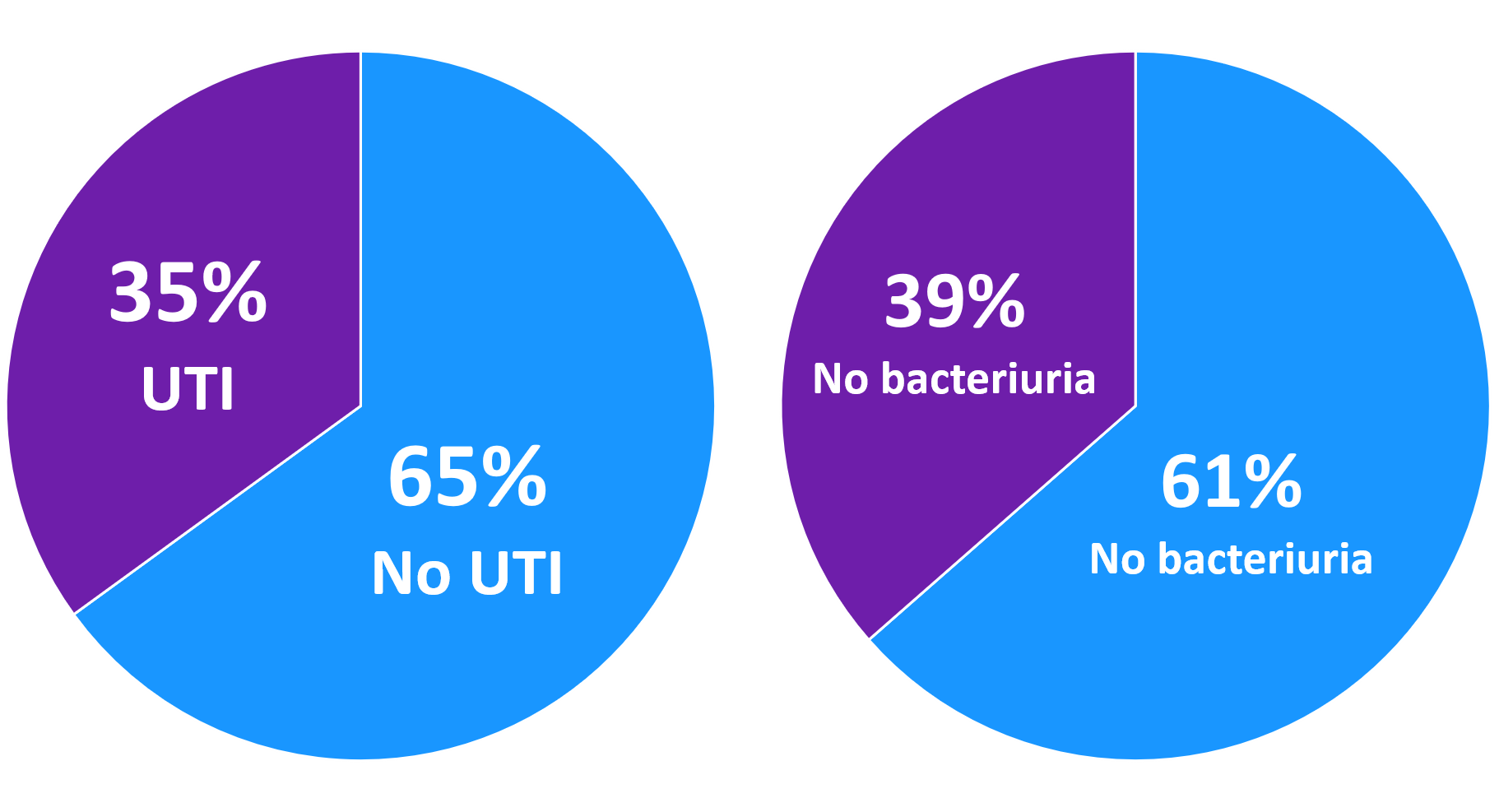
Single-use hydrophilic catheters were developed in the early eighties to address long-term complications of intermittent catheterization that came about when people reused plastic catheters with add-on lubrication.
As reported by Wyndaele and Maes1 and Perrouin-Verbe et al.2 the majority of complications related to intermittent catheterization occur after long-term use as a result of damage to the urethral wall from repeated catheterizations. In contrast, long-term use of LoFric hydrophilic catheters is reported to prevent urethral trauma and complications.3 4
LoFric documentation: Long-term safety
Health Care Utilization and Complications Rates among Users Of Hydrophilic-Coated Catheters5. Observational study of catheter-associated complications in 288 long-term (mean of 10 years) LoFric users. The results suggest that LoFric use reduces the risk of complications associated with intermittent catheterization and that users may benefit from a change to LoFric.
Physical predictors of infection in patients treated with clean intermittent catheterization: 7-year study3
An observational study of 155 LoFric users provides long-term evidence that intermittent catheterization using LoFric reduces the risk of urethral complications, including UTIs. For example, 65% of the patients were UTI-free and 39% had sterile urine after 7 years with LoFric.
Bakke et al. report the results of an observational study of Norwegian patients practicing intermittent catheterization with a focus on complications. An initial sample of 302 patients who were previously evaluated 7 years ago was asked for participation. Questionnaires from 170 patients and urine samples from 150 patients were evaluated. Patients in the study had different backgrounds; 32% had higher spinal cord injury, 36% had lower spinal cord injury and 31% had bladder dysfunction of unknown etiology. The mean duration of intermittent catheterization was 8 years and 9 months and 91% used LoFric catheters. The results showed that 65% of the patients had no signs of clinical UTI, and 35% had signs of clinical UTI (6% with pronounced symptoms and 29% with only minor signs of UTI). Bacteriuria was found in 61% of the urine samples. The dominating species were Escherichia coli for women and gram-positive cocci for men.
The publication identifies three main predictive factors for UTIs:
- Women have more infections
- A history of UTI
- High catheterization volume increases the risk
Frequency was also found to be predictive of bacteriuria where patients with a low catheterization frequency were less prone to have sterile urine. The study reports that sterile urine was seen in 31% of the patients not using antibiotics and in 54% of those who did.

Figures based on results reported by Bakke et al. 199726
Clean intermittent catheterization in spinal cord injury patients: long-term follow-up of a hydrophilic low friction technique
Retrospective analysis proposes that long-term use of LoFric hydrophilic catheters reduces UTIs and prevents urethral trauma. For example, no new urethral trauma was identified during a 5-9 year follow-up of 30 LoFric patients.